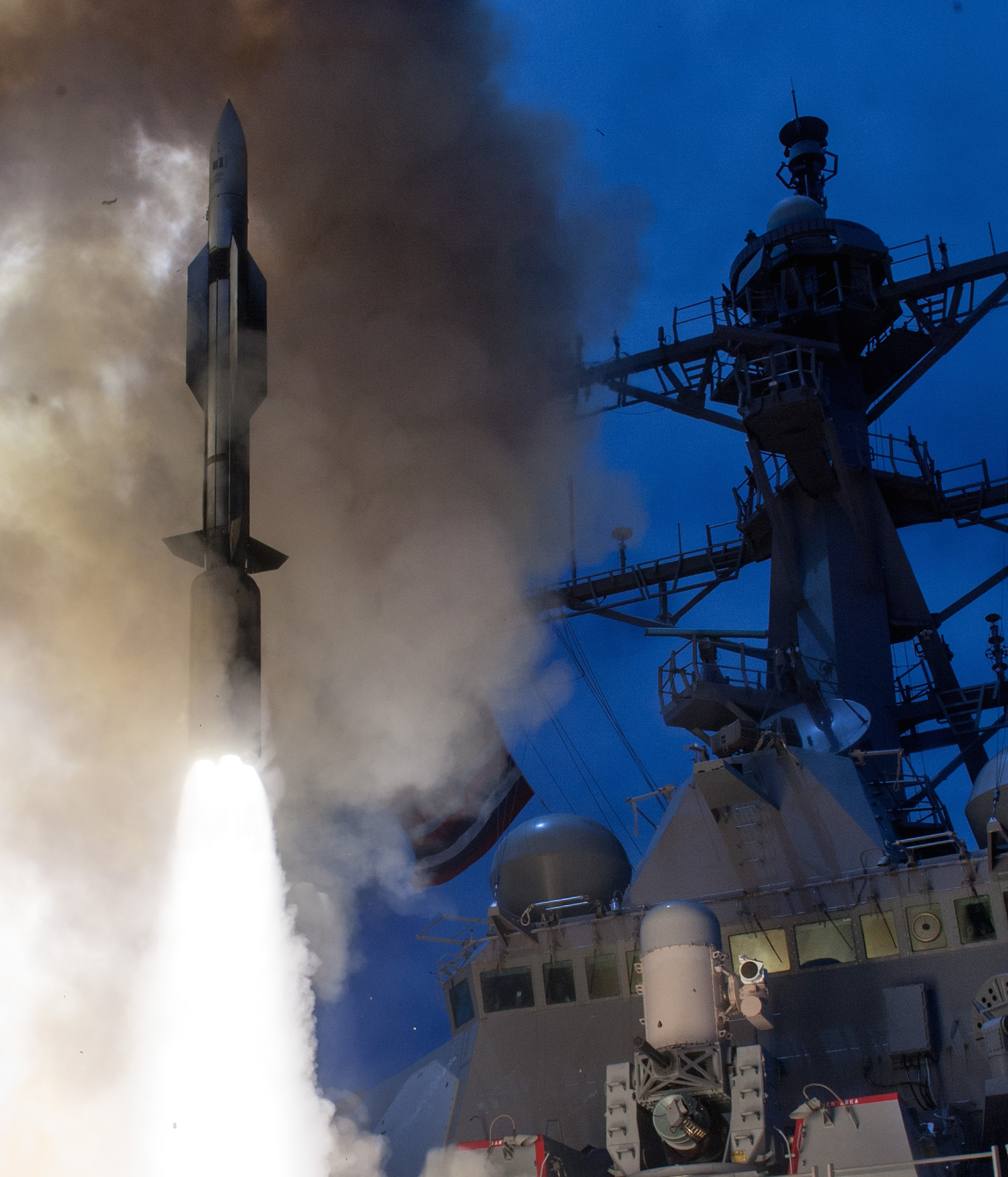
The vice chairman of the Joint Chiefs of Staff described the nation’s efforts in domestic and regional missile defense as “being on an upward trajectory,” smiling in acknowledging his own quip, in a speech Tuesday.
Adm. James “Sandy” Winnefeld, speaking at the Center for Strategic and International Studies, said “we have to take Iran and North Korean threats seriously” while realizing their current capabilities are limited in terms of missile range and accuracy.
For example, “North Korea is many years away from developing” submarine-launched ballistic missiles.
Winnefeld said several times that Russia has nothing to fear from the regional missile defense systems in Europe, which are designed to deter Iran. Noting that the number of known ballistic missiles has grown from 1,200 to 6,000 – not including either China or Russia – the need for such regional defenses is growing to counter weapons that are “more mobile, more accurate” and “can attack ships at sea.”
To guard against this threat, Winnefeld said the Navy now has 33 Aegis-equipped ships in the fleet for global missile defense and is “living up to our commitment” to station four of these ships in the Mediterranean for ballistic missile defense there. He added that putting the Aegis Ashore defense site in Romania to further guard against missiles from Iran is a “no-brainer.”
He admitted “regional architecture [for missile defense integration] is not built in a day” but said “we have an excellent track record with our regional systems,” citing the performance of Aegis and the Terminal High Altitude Area Defense (THAAD) in tests.
Winnefeld added that potential adversaries wouldn’t have that same understanding of how well their own defensive systems work because they do not do the same extensive testing the U.S. military does.
Looking at the Middle East, he cited the United Arab Emirates buying a THAAD battery, Kuwait’s securing a Patriot Advanced Capability-3 system and Saudi Arabia’s recent moves to upgrade its defense systems against potential threats from Iran.
Actions such as these “send a clear message of deterrence,” and having allies and partners share more of the burden for Aegis-based defense frees Navy ships for other missions, he added. Winnefeld pointed to Japan as an example of a close ally in missile defense.
Also in the Pacific, Winnefeld said the United States and the Republic of Korea are “not yet engaged” in formal negotiations to deploy the THAAD on the peninsula. Recognizing what a politically sensitive issue this is in Seoul, he said in response to a question, “we’re approaching this very carefully.”
To counter cruise missile threats – with their greater element of surprise than intercontinental ballistic missiles – Winnefeld said tests are continuing at Aberdeen Proving Ground, Md., on the Joint Land Attack Cruise Missile Defense Elevate Netted Sensor System (JLENS). Looking like a blimp, it is capable of providing 360-degree radar coverage up to 340 miles away.
He said there has still been “no decision to move ahead” on establishing an East Coast ballistic missile defense site, such as the ones now at Vandenberg Air Force Base, Calif., and Fort Greely, Alaska.
Winnefeld noted there is pressure to keep costs down in missile defense, and pursuing new technologies now to defeat threats more cheaply may be worth the investment. He cited chairman of the Joint Chiefs Gen. Martin Dempsey’s testimony from last year, where the general said the military currently has to use an $11-million THAAD shot to defeat a $3-million Scud missile.
The vice chief said the rail gun and directed energy weapons now in research and development could defeat that threat for much less money per shot.
He said the United States is also exploring ways to deter missile attacks “left of launch,” or before firing.
“There is no shame in passive missile defense,” he said, which would include reducing force vulnerability, tactical warning and recovery and reconstitution.
While “no [defensive] system can achieve perfection,” the goal is deterrence so potential adversaries realize that if they attack there will be “pain but no gain.”





